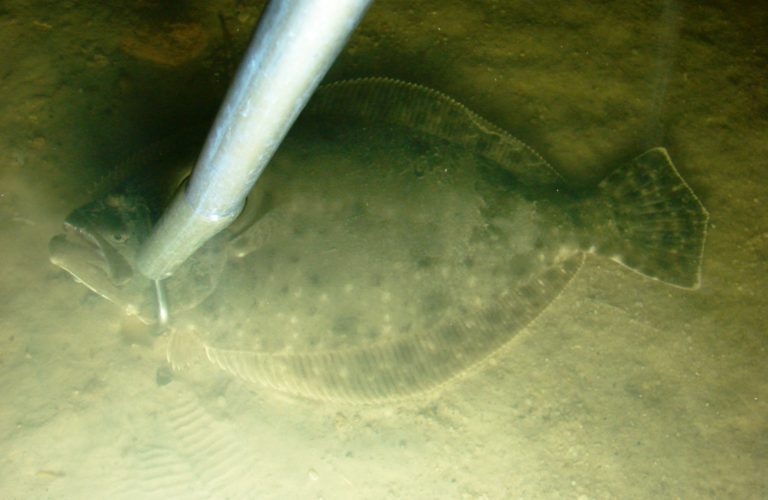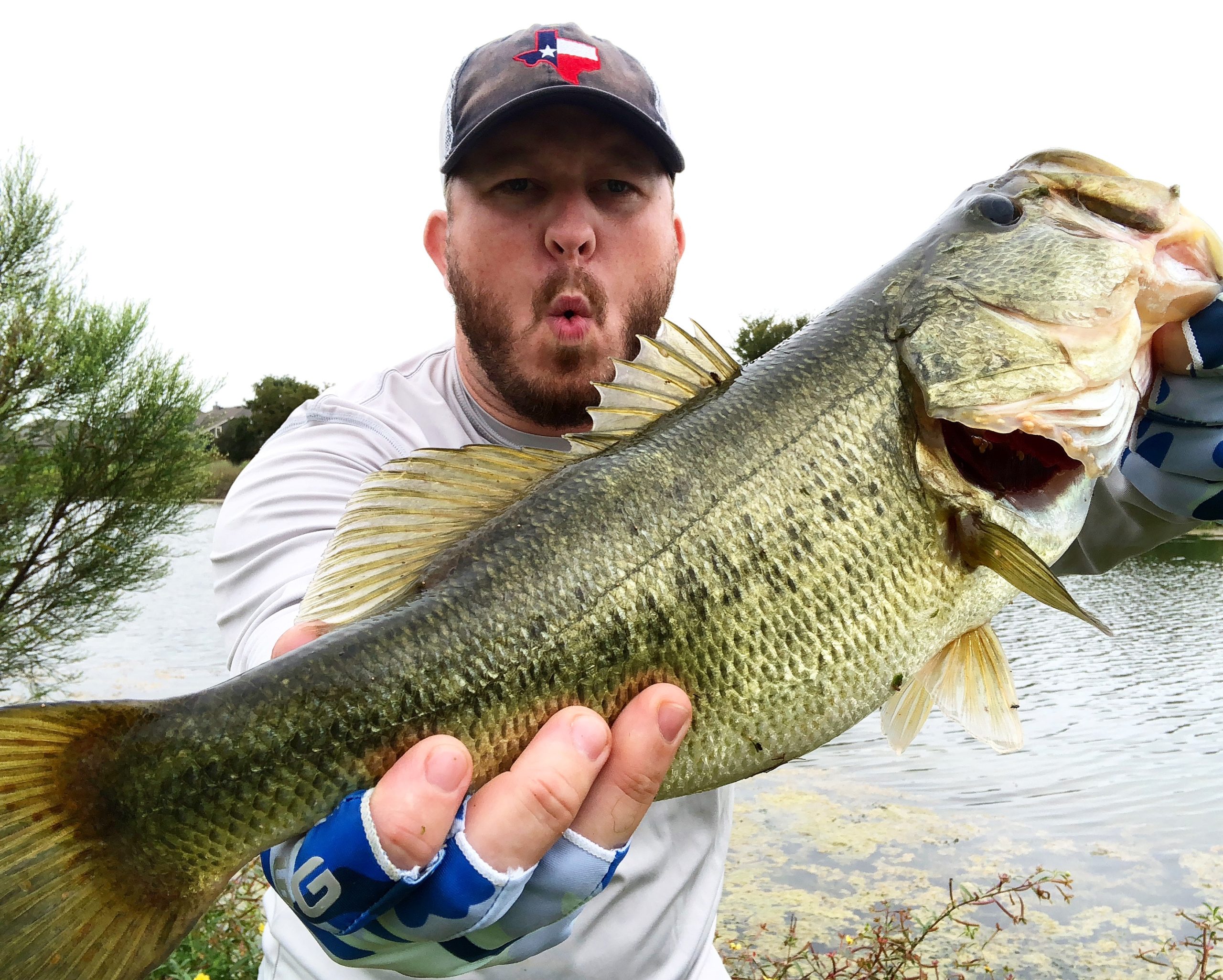I consider myself an angler. I like to fish. Hell, I love to fish. There’s just something about the anticipation that every “next cast” could be a fish. I’m primarily a pond-hopper, as I don’t currently own a boat. I’ve also made it to the coast for some saltwater action. I’ve even gone on some guided trips, but nothing like this.
For my 39th birthday, we headed down to the coast with our friends, Jon and Rebekah. I was hoping to a do a little surf fishing while the kids built sandcastles, and maybe, if I was lucky, I could sneak away early to fish the shore or a pier. Then, a week before the trip, my amazing wife surprised me. “You’re going flounder gigging with Jonny when we get there. Is that cool?”
“Is that cool?” she asks me. Uh, yeah. It’s way more than cool. It’s awesome! I’ve never been, and it’s something I’ve really wanted to do.
For the uninitiated, flounder gigging goes like this: you stand at the front of a boat that’s been outfitted with a deck on the front with a guide rail around it, so you can lean out a little over the edge of the boat. It’s also got lights that go under the water and on the water – because you do this at night. To move the boat around, there’s a traditional engine to get you where you’re going, but since you’re floating in less than two feet of water when actually gigging, there’s also an airplane propeller mounted above the engine. Alright, maybe it’s not actually an airplane propeller, but it sure looks and sounds like one!

Once you roll up to a location where flounder might be, you grab your gig: an eight foot long metal pole, wrapped with duct tape for grip, with a four- or five-tined fork on the end. In my mind, it’s a spear. I’m an ancient hunter in a lagoon somewhere in the pacific. Look, it’s my imagination, and no one can tell me different. Out loud, I acquiesce and call it a gig, though.
Gig in hand, you lean on the rail and look down. The guide is up in the front with you, controlling the boat and spotting. And if it’s your first time, you’ll need that spotter.

So Jonny and I set out with Captain Joe about 8:30 PM. We find a spot and he starts telling us what to look for. Up near the coasts of little islands, where it gets real shallow and bait fish like to hang out, we are supposed to look for sandy spots. The flounder will lay down flat in that sand, and await unsuspecting prey. They also might be found in rocky or oyster-y spots, but sand seemed to be the main choice.
The species we are after is the Southern Flounder (Paralichthys lethostigma), the largest flounder in the Gulf of Mexico. The world record for this fish is almost 21 lb. Flounder live in bays and other inlet waters, but spawn in the deep waters offshore. In order to do so they pass through the gulf in the fall and winter, and that’s when the catch is on, so to speak.

As the boat creeps along, you’re looking for gaps in the grass where sand is. These flat fish are tough to spot. Especially on this night since there had been rain earlier that week that mucked up the water. You can really only see the outline and maybe their eyes. To up the difficulty level, any fish you take must be 15 inches long.
The brutality is apparent.
So we’re poking along not seeing much and Captain Joe jams his pole into the sand to stop the boat. “There!” He points to Jonny’s side. And WHAM! Jonny spears his gig into the sand – right through the eyes of a flounder. A big flounder. 21 honest to goodness inches – that’s a good-sized one.
Now these gigs don’t have barbs. So you can’t just pluck the fish straight up. You have to push down, and tilt the pole as far as you can, then raise it up over the boat and flip it into a bucket that has a slot for scraping the fish off the gig.
It’s well documented that I’m not one of those “I’m just happy if everyone catches some fish” kind of guys. I want to catch all the fish. So, while I got a rush of adrenaline from the action, I was also salty. Now it’s my turn. A few minutes go by, and I get a shot at a drum, but he’s too far out. Then, “There!” Captain Joe points to my side. And POW! I’ve got a skewered flounder.
The brutality is apparent. You want to gig them in the head to preserve all the meat and you have to look them in the eyes to do so. But it also taps into something primal for you. It feels like you’ve been doing it for thousands of years. As barbaric as it seems, it’s wildly satisfying.
Shortly after, I did a get a drum. Then we felt rain. Captain Joe checks the radar, and sure enough: here comes a storm. A mere 90 minutes into our four hour trip. So we boogie over to the lighthouse. Turns out, this lighthouse has a story.

The Aransas Pass Light Station was built in 1851, making it the second oldest on the Texas coast. During the Civil War, Confederate soldiers removed and buried the lens so that Union forces could not use the lighthouse for navigation. The lens was never found and is considered a buried treasure – as the fourth-order Fresnel lens hasn’t been made since the specially designed factory was destroyed in World War II.
Our plan was to take shelter near the shed on the dock, but lucky for us, the lighthouse keeper‘s son was there, and invited us up to the covered porch of the house. It came down pretty hard for about 45 minutes. We would have been soaked. But we kept dry and headed back out.
It was pretty slow going for a while. Lots of beds – spots where flounder had been. Lots of baby flounder. But no 15+ inchers. We did see a dolphin – which seems cool, until you realize she’s chasing mullet and scaring them to the lights of the boat, which stirs them right to where the flounder would be, scaring away our heretofore unsuspecting quarry.
Midnight comes and goes. I’m thinking we’re about to head in. Captain Joe says we’re not going home with a measly three fish. We press on. Flounder gigging isn’t for quitters, I’m discovering. Stubbornness, as it turns out, pays off.
Around 1:00 AM, it’s back on. “There!” BOOM! “There!” POW! The action he says up. The tide had come in, which made new areas accessible by boat, and those new areas were where the fish were. I can’t imagine wading out in the cold water, gig in hand to do this but that’s precisely what generations of fisherman have done before us. Thinking of them, and internalizing a little gratitude for our guide and his watercraft helps me to ignore the blend of aching bones and heavy eyelids typical of a middle-aged man who has stayed up past his bedtime. I can power through a little more of this luxury, I decide.
We stayed out until 2:30 AM. The final count: nine flounders and one drum. All told it was about 25 pounds of fish (pre-cleaning). The next day was rough, as the kids were up early, and it was an all-day beach day. We were exhausted. But I would do it again in a second. It was worth every bit of sleep missed and then some.

We filleted out all the fish – next time I’ll keep one while to mess around with – and fried some up that next night in some corn meal. We also did some in brown butter with lemon. Me oh my, it is a tasty fish. I’ve got some more filets in the freezer, plus that drum, to have some fun with.
If you’ve got the opportunity to get to the coast, forget about sleep and get your giggin’ arm warmed up. The flounder are a fantastic resource and the rare combination all outdoorsmen seek: They taste great, and getting them is enough fun to justify all the work.




